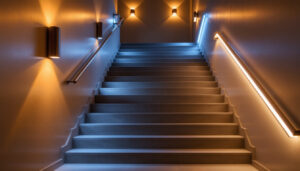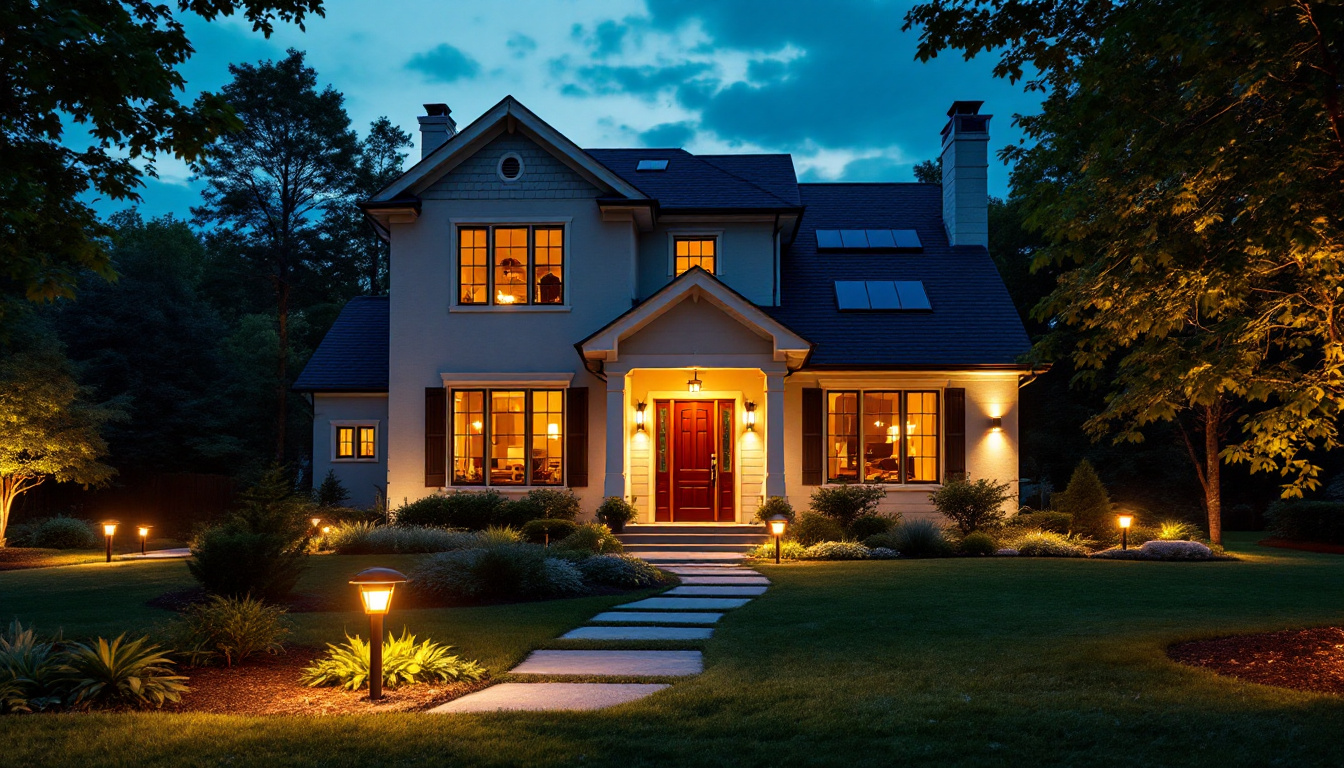

strip lighting has become an essential component in modern design, offering versatility and aesthetic appeal in both residential and commercial spaces. For lighting contractors, mastering strip lighting can significantly enhance project outcomes and client satisfaction. This article delves into the intricacies of strip lighting, providing insights and strategies for contractors to excel in this domain.
Strip lighting, often referred to as LED tape or ribbon lighting, consists of a flexible circuit board populated with light-emitting diodes (LEDs). This type of lighting is favored for its adaptability, allowing it to be installed in various locations and configurations. Understanding the fundamental characteristics of strip lighting is crucial for any contractor looking to incorporate it into their projects. The flexibility of strip lighting not only allows for creative designs but also enables it to be cut to specific lengths, making it suitable for both large-scale installations and smaller, more intricate designs.
There are several types of strip lighting available, each designed for specific applications. The most common types include:
By familiarizing themselves with these types, contractors can make informed decisions based on the specific needs of their clients. Additionally, understanding the differences in power consumption and heat generation among these types can help in selecting the right product for energy-efficient designs, which is increasingly important in modern construction and renovation projects.
Strip lighting is incredibly versatile and can be utilized in numerous applications, including:
Understanding these applications allows contractors to propose tailored solutions that meet their clients’ specific lighting needs. Furthermore, strip lighting can also be employed in innovative ways, such as under-cabinet lighting in kitchens to enhance visibility while cooking or in coves and recesses to create a soft glow that elevates the overall aesthetic of a room. The ability to dim or change colors with smart LED strips also opens up exciting possibilities for creating dynamic environments that can adapt to different moods or occasions.
Selecting the appropriate strip lighting involves considering various factors, including brightness, color temperature, and installation location. Each factor plays a significant role in the overall effectiveness of the lighting solution.
Brightness is measured in lumens, and understanding this metric is vital for contractors. A higher lumen output indicates a brighter light, which is essential for task-oriented spaces. For example, kitchens and work areas may require strips with higher lumens, while living rooms may benefit from softer, lower-lumen options.
Contractors should also consider the length of the strip and the number of LEDs per meter, as these factors directly influence the overall brightness. A well-lit space is not only functional but also enhances the aesthetic appeal.
Color temperature is measured in Kelvin (K) and affects the ambiance of a space. Strip lights typically range from warm white (2700K) to cool white (6500K). Warm white is ideal for creating cozy environments, while cool white is better suited for modern, bright settings.
Contractors should engage with clients to determine their preferences and the intended mood of the space. Offering samples or visual aids can help clients make informed decisions.
Installation is a critical aspect of strip lighting that contractors must master. Factors such as surface type, power source, and mounting options can influence the installation process. For instance, adhesive-backed strips are convenient for quick installations, while clips may be necessary for more secure applications.
Additionally, ensuring proper power supply is essential. Contractors should calculate the total wattage required and select an appropriate power supply to avoid issues such as dimming or flickering lights.
Mastering installation techniques is paramount for lighting contractors. A well-executed installation not only enhances the functionality of the lighting but also contributes to the overall aesthetic of the space.
Before installation, thorough planning is essential. Contractors should assess the installation area, taking measurements and identifying potential obstacles. Creating a detailed plan helps in determining the length of the strip needed and the best locations for installation.
Additionally, preparing the surface where the strip will be installed is crucial. Cleaning the surface ensures better adhesion and longevity of the lighting solution.
There are various mounting options available for strip lighting, each with its advantages. Adhesive backing is common for quick installations, but for more permanent solutions, using mounting clips or channels can provide added security and a clean finish.
Contractors should also consider the visibility of the strip. Installing it in a way that minimizes glare while maximizing light distribution is key to achieving the desired effect.
Electrical knowledge is vital for lighting contractors. Understanding how to connect strips to power sources, including the use of connectors and soldering techniques, is essential for a successful installation. Ensuring that all connections are secure and insulated will prevent electrical hazards and ensure longevity.
Moreover, contractors should be aware of local electrical codes and regulations to ensure compliance and safety in their installations.
To elevate the effectiveness of strip lighting, contractors can incorporate various accessories that enhance functionality and aesthetics.
Dimmers allow for adjustable brightness, providing clients with flexibility in their lighting solutions. Installing dimmers can create different moods and enhance the usability of a space.
For smart homes, integrating controllers that allow for remote access and programmable settings can significantly enhance the user experience. These features not only add convenience but also appeal to tech-savvy clients.
Using diffusers or covers can soften the light output and reduce glare, creating a more pleasant ambiance. These accessories can also protect the LED strips from dust and damage, extending their lifespan.
Contractors should consider recommending diffusers to clients who are sensitive to bright lights or who want to achieve a more uniform light distribution.
Color-changing strip lights are a popular choice for clients looking to add versatility to their lighting. These strips can shift between different colors, allowing users to customize their environment based on mood or occasion.
Contractors should familiarize themselves with the technology behind color-changing strips, including controllers and app integrations, to provide comprehensive solutions to their clients.
Despite the many advantages of strip lighting, contractors may encounter challenges during installation and maintenance. Being prepared to address these issues can set a contractor apart in the industry.
Flickering or dimming lights can be a common issue, often caused by insufficient power supply or poor connections. Contractors should ensure that the power supply matches the wattage requirements of the strip lights.
Additionally, checking all connections and solder points can help identify any faults that may be causing the flickering. Providing clients with information on how to troubleshoot these issues can enhance their satisfaction with the installation.
LEDs generate heat, and improper heat management can lead to reduced lifespan and performance. Contractors should ensure that the strips are installed in well-ventilated areas and consider using heat sinks or aluminum channels to dissipate heat effectively.
Educating clients about the importance of heat management can also prevent future issues and ensure the longevity of the lighting solution.
In some cases, adhesive-backed strips may not adhere properly due to surface contaminants or unsuitable surfaces. Contractors should ensure that the installation surface is clean and dry before applying the strips.
If adhesion issues persist, using mounting clips or additional adhesive solutions can provide a more secure installation.
The lighting industry is continually evolving, and staying ahead of trends is essential for contractors looking to remain competitive. Understanding emerging technologies and design trends can provide valuable insights for future projects.
As the demand for sustainable solutions grows, energy-efficient lighting options are becoming increasingly popular. Strip lighting, particularly LED strips, is inherently energy-efficient, making it an attractive choice for eco-conscious clients.
Contractors should stay informed about advancements in LED technology and energy-saving practices to provide clients with the most sustainable options available.
The integration of strip lighting with smart home systems is becoming more prevalent. Clients are seeking lighting solutions that can be controlled via smartphones or voice-activated devices. Understanding how to install and configure these systems can set contractors apart in a competitive market.
Offering smart lighting solutions can enhance the overall appeal of projects and attract tech-savvy clients.
Innovative design applications for strip lighting are emerging, with designers using strips in creative ways to enhance architectural features. From cove lighting to under-cabinet installations, the possibilities are endless.
Contractors should keep an eye on design trends and be prepared to offer unique solutions that meet the evolving demands of clients.
Mastering strip lighting is an invaluable skill for lighting contractors. By understanding the various types, applications, and installation techniques, contractors can provide tailored solutions that meet their clients’ needs. Incorporating accessories, addressing common challenges, and staying informed about future trends will further enhance a contractor’s expertise in this dynamic field.
As the demand for innovative lighting solutions continues to grow, contractors who invest in mastering strip lighting will undoubtedly stand out in the competitive landscape. Embracing this opportunity will not only elevate project outcomes but also foster long-lasting client relationships built on trust and satisfaction.
Ready to take your lighting projects to the next level with the expertise you’ve gained? Choose LumenWholesale for all your strip lighting needs. Our extensive selection of spec-grade lighting products comes at unbeatable wholesale prices, ensuring you get the best value for your investment. Say goodbye to local distributor markups and hello to superior lighting products that meet the highest industry standards. Plus, with free shipping on bulk orders, you can stock up on high-performance lighting without worrying about hidden fees. Elevate your lighting solutions today and enjoy the quality, affordability, and convenience that only LumenWholesale can offer. Wholesale Lighting at the Best Value is just a click away.

Discover why lighting contractors should prioritize light molding in their projects.

Discover innovative hacks for smart lighting contractors to enhance curb appeal with exterior solar lights.

Explore the pros and cons of sodium lights versus modern alternatives in this insightful guide for lighting contractors.

Discover how Sylvania Lighting is revolutionizing the industry, providing lighting contractors with innovative solutions and tools for unparalleled success.
Get notified when NEW deals are released.
Optimize your budget with wholesale discounts.
Only top-quality, specification-grade lighting products.
No additional costs at checkout - what you see is what you pay.
We understand the unique needs of contractors.